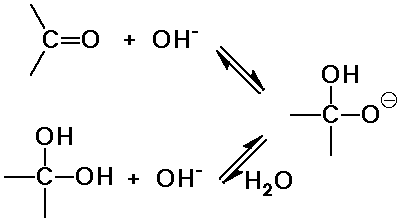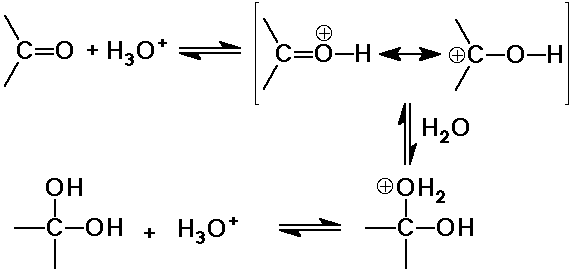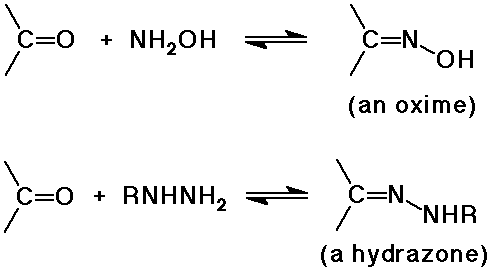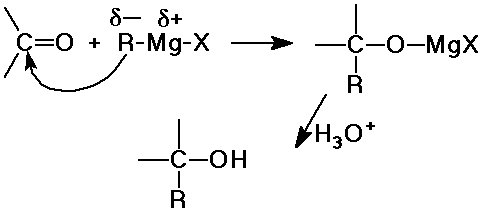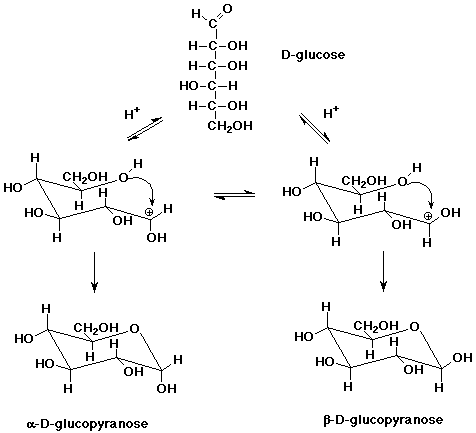Organic Chemistry III |
||
Professor Carl C. Wamser |
![]()
Organic Chemistry III |
||
Professor Carl C. Wamser |
![]()
![]()

usually subdivided into two families:



formaldehyde
acetaldehyde
propionaldehyde
butyraldehyde
benzaldehyde
acyl- as prefix
e.g., acetyl or benzoyl, as in acetylcyclopropane
the major reaction of carbonyl compounds
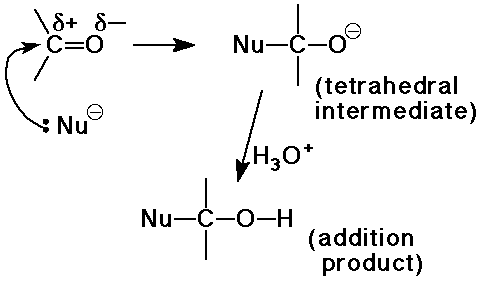
C nucleophiles: CN-, RLi, RMgX, ylids
O nucleophiles: OH-, H2O, ROH
S nucleophiles: RSH
N nucleophiles: NH3, RNH2 , NH2OH, RNHNH2
H nucleophiles: LiAlH4, NaBH4
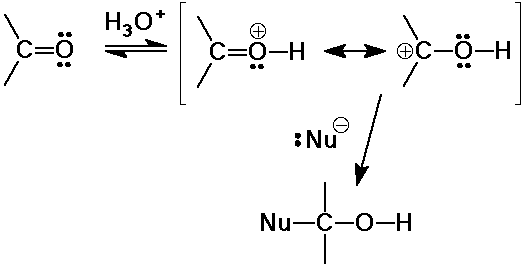
![]()
